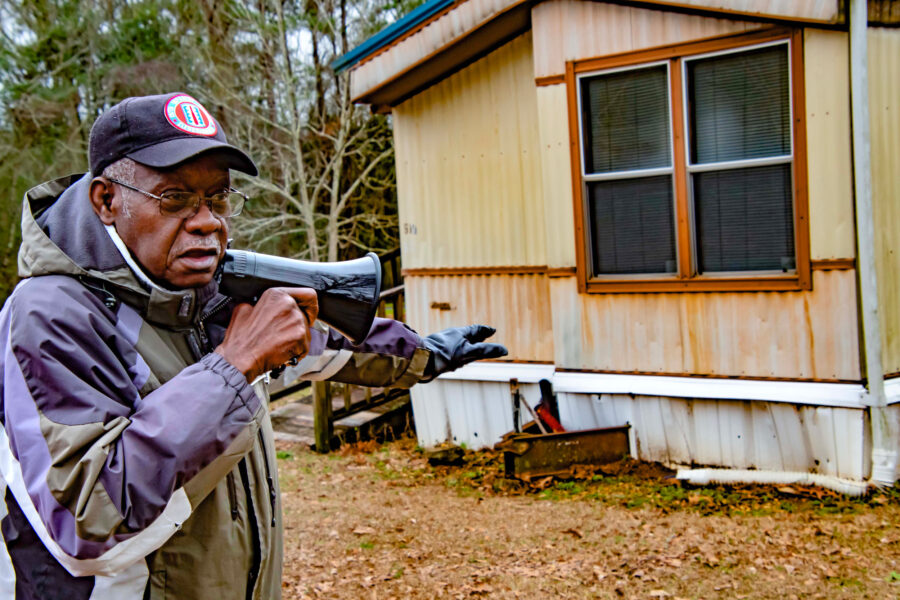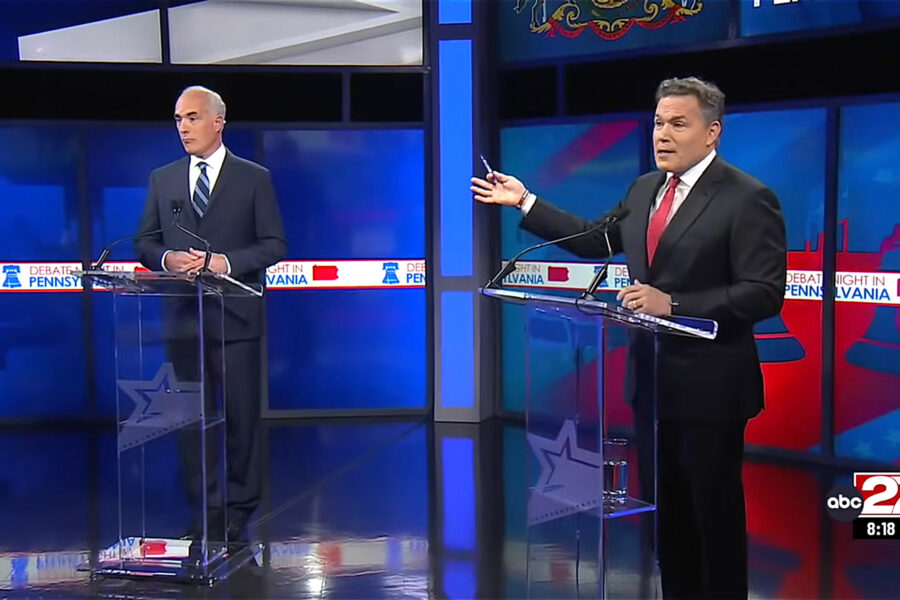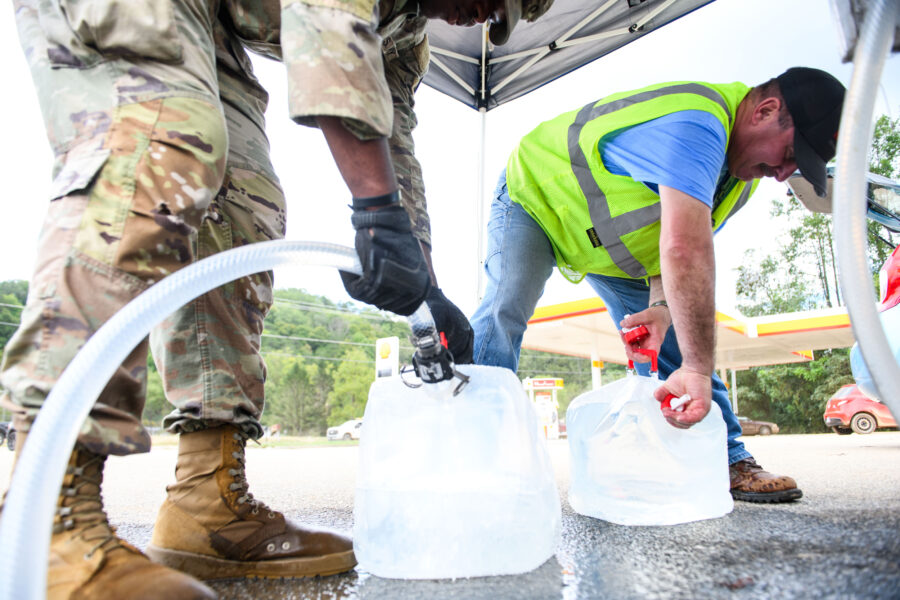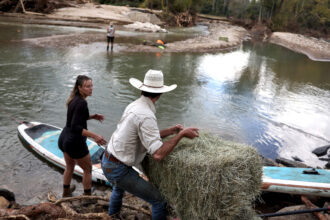Truth, Reckoning and Right Relationship: A Rights of Nature Epiphany
CLEVELAND—When Tish O’Dell began community organizing in her hometown of Broadview Heights, Ohio, in 2010 to ban hydraulic fracturing, or fracking, she was certain that changing the law was the surest method to protect residents and the local environment.
And so she did, working with other mothers in town to add a charter amendment to the city’s existing Home Rule Charter, or mini constitution. That amendment passed in 2012 and banned new gas operations in Broadview Heights while recognizing that nature, similar to humans, possesses certain rights, like the right to exist. The maneuver worked, stopping new drilling, until it didn’t.
The Ohio Supreme Court ruled three years later, in 2015, that towns and cities in the state cannot regulate fracking—that power rested with state agencies by virtue of a state law that gave “sole and exclusive authority” over oil and gas production to the state.
The turn of events—advocacy efforts thwarted by legal and political systems—became a common theme among participants at a “Truth, Reckoning and Right Relationship” event last week at Cleveland’s Museum of Contemporary Art (MoCa) to mark the 54th anniversary of Earth Day. It was organized by O’Dell’s nonprofit, the Community Environmental Legal Defense Fund (CELDF).
We’re hiring!
Please take a look at the new openings in our newsroom.
See jobs”We can’t create healthy and sustainable communities while continuing to work within the current system we live in,” O’Dell told the crowd of about 70, many of whom nodded their heads in agreement.
Like O’Dell, the people in the room had long grappled with how to affect change at scale and in time to confront global challenges like climate change and biodiversity loss. Earth broke record after record last year, which was the hottest on record by a large margin.
That has played a role in more intense droughts, storms and extreme weather. At the same time, Earth is losing wildlife at a breathtaking pace due to industrialization, pollution and destruction of habitats. Since 1970, vertebrate species populations have declined by 69 percent on average.
Each year, humans produce 430 million tons of plastic waste, mostly for short term use like food packaging or take away utensils. And air pollution alone is responsible for 7 million human deaths annually. All of these problems are, to some extent, interconnected, complex and impact human health. Though life on Earth has always adapted to ecological changes, it has never faced alterations at the scale and pace that humans have been causing, meaning the stakes for O’Dell couldn’t be higher.
An Earth Day Parable: The Struggle for the Rights of Nature
After Broadview Heights’ charter amendment was struck down, O’Dell channeled her,
disappointment into action, working with other Ohio communities to propose over 40 laws throughout the state to limit environmental harm and recognize the rights of nature.
Their efforts culminated in a 2019 referendum in which Toledo voters approved the Lake Erie Bill of Rights, recognizing the lake’s rights to “exist, flourish and naturally evolve.” Months later, a federal court struck down the law as unconstitutionally vague and for exceeding the authority of a municipal government.
Other referendum proposals O’Dell had worked on never made it onto the ballot, with fossil fuel, agricultural and other industry groups funding fierce campaigns against the measures. State lawmakers quickly moved to preempt the authority of communities to enact rights of nature laws, the same way they had done with fracking regulations.
O’Dell was disturbed by these outcomes and even more so by the realization that communities like hers lacked control over their local environment, which she saw as closely wedded to her and her neighbors’ health and livelihoods. She had also come to hold a deeper understanding about the natural world.
She had always had a close relationship to Lake Erie, growing up just 10 miles from its shores. As an adult, she felt stronger than ever that there was an ethical imperative to recognize that Lake Erie and other ecosystems have the right to exist and regenerate. Doing so wasn’t just symbolic. Like human rights, granting rights to nature would afford ecosystems a higher level of legal protection than conventional environmental protection regulations. But the U.S. legal system seemed further away than ever from recognizing nature’s rights.
She was left wondering: what would it take to break through these barriers?
Around this time, O’Dell’s thinking about how to affect change began to evolve. She questioned the viability of the U.S. legal and political systems as they were currently structured and wondered if they had the capacity to facilitate the kind of paradigm shifting change she felt was necessary to confront environmental challenges facing communities throughout the country.
Decades of environmental lawmaking had stopped rivers from catching on fire, but Lake Erie, like other ecosystems, was taking on more and more contamination from agricultural runoff, human and industrial waste and other sources of pollution. It seemed to O’Dell that those laws gave companies the right to pollute, merely regulating the amount and pace of pollution, rather than protecting the interests’ of ecosystems and the people who depend on them.
Contributing to her assessment that the legal system was “fixed” were court cases like Citizens United v. Federal Election Commission, a 2010 U.S. Supreme Court ruling that upheld first amendment rights for corporations with regard to spending on political advertisements, allowing them to spend unlimited amounts.
Summing up her thoughts about such jurisprudence, O’Dell painted a protest sign that read: “If Corporations Have Rights, Shouldn’t Mother Nature?”

The sentiment was direct and to the point. But murkier than ever, in her mind, was how to cement the idea into U.S. law, which despite a proliferation of local rights of nature ordinances, has never upheld or enforced such laws.
Then in 2019 O’Dell heard that Los Angeles-based artist Andrea Bowers was interested in learning more about the Lake Erie Bill of Rights and how she could support the work of O’Dell and her colleagues at CELDF.
A partnership was born, with O’Dell and her colleagues teaching Bowers about the rights of nature movement and Bowers’ opening the imaginations of CELDF’s legal-oriented staff to other theories of change. The collaboration birthed Bowers’ “Exist, Flourish and Evolve” exhibit showing at Cleveland’s Museum of Contemporary Art (MoCa) through May 26. It also gave rise to CELDF’s two-part “Truth, Reckoning and Right Relationship,” aimed at exploring ways to foster connection between people and the ecosystems in which they live.

Part 1 took place last fall at Cleveland’s Rock and Roll Hall of Fame, where 15 people from across four states gave testimony about how they have positively and negatively had an impact on the environment. Part 2 took place last Monday, Earth Day, and the following day at MoCa.
A Prerequisite for Legal Change
O’Dell and her colleagues’ thinking behind the event has always been that changing culture may be a necessary prerequisite for changing the law. Or, as she told the Earth Day crowd, “You can’t expect people to flood into the street demanding environmental change when they don’t have a relationship with nature.”
O’Dell, CELDF’s consulting director, said she was searching for ways to affect change after spending nearly 20 years trying to stop the destruction of nature through litigation and lawmaking.
“We’ve been forced to face some hard truths and reckon with those truths,” O’Dell said about the roadblocks in the U.S. legal system.
Her colleague, Ben Price, CELDF’s education director, elaborated, telling the group that it was necessary to consider the way human lifestyles affect nature.
“How do we reckon with how we’ve lived and have turned our relationships with nature into something, I’ll say, pathological instead of healthy and normal,” Price said. “The way we live isn’t normal, it’s not the way humans are meant to live.”
Participants, ranging in age from high schoolers to retirees, spoke of their relationships with ecosystems varying from the St. Lawrence River, to Cape Cod, Chicago’s greenspaces and Ecuador’s cloud forests.
Some felt deeply connected to nature, spending large swaths of time foraging, fishing, hunting or just sitting quietly amid their surroundings. Others recounted moments of childhood enchantments with the great lakes or the way rain, regardless of location, evokes an emotional response in them.
Yet others felt as though they were taught that nature was so vast, that there was nothing they could do to truly harm it. “All that has changed,” said Joel Baetens, an energy engineer from Oberlin, Ohio, whose relationship with a lake near his home has evolved over time. “Now I see water as essential to all life on Earth.”
Seated in the glow of Bowers’ neon light installation entitled “Exist, Flourish and Evolve,” participants aired grievances about communities that bear disproportionate pollution burdens or that are cut off from greenspaces by dense city infrastructure. The sentiment that the “system” is rigged against them and in favor of powerful business interests was conveyed over and over. “I’m looking for solutions,” declared Michael Skyladany, who decried the degradation of a creek he has fished in for 56 years and the privatization of land around it.
To help people explore possible solutions, the event offered workshops on non-legal mediums like storytelling that could be used as forms of expression and to change hearts and minds about humans’ relationship to Earth.
Bowers and MoCa Executive Director Megan Reich spoke about how the arts can be used to support the work of activists. Beyond working with CELDF, Bowers has an extensive history of elevating the causes of activists through her art on issues ranging from women’s rights to migrant justice and workers’ rights.
“Connecting through Ceremony” was highlighted as another avenue for change. Summer Garcia (Ojibway, Potawatomi and Aztec descent) and Montana Riley ((Walpole Island First Nation and Anishinaabe Kwe) spoke about how water ceremonies—water walks and cedar baths in particular—can foster connection between and among humans and the natural world.
“The same water that is here today is the same water that has been here since the beginning, nearly 5 billion years ago, it only changes its form over time,” said Garcia.
A session on “embodied experiences” was led by Carine Gibert, a facilitator for Grounded in Motion, a New York City-based organization that designs educational and artistic experiences to reconnect humans with nature. Gilbert dimmed the lights, asked participants to stand up and played soundtracks composed to cultivate empathy for the Earth.
Gibert later spoke about her work with students, having them choose a spot in nature and over a period of time witness changes to the land or water and write letters to that ecosystem.
“The letters become a way for a relationship to be slowly rekindled,” she said.
Gibert also showed images of nature-focused art work, including photographs of female performance artists tossing long extensions of their hair into a river. The tips of the artificial hair contained testing strips to measure the alkalinity of the water. The gesture was aimed at mending a damaged relationship between the polluted waterway and the locals living alongside it.
“The arts can shift our understanding and narratives,” Gibert suggested. “These projects examine how we are increasingly divorced from our relational existence with Earth and what actions may allow this to be healed.”
Sundance, executive director of the American Indian Movement-Cleveland, gave the event’s keynote address, encouraging participants to strive to see and think about the world in new and different ways. He questioned how people can form relationships with nature when most people spend little time within it, then offered a simple solution:
“How can we have a relationship with something we know nothing about?” he asked, pausing and eyeing the crowd for a moment. “I would suggest that’s impossible, but all we have to do is open the door and walk through it.”
Share this article
Disclaimer: The copyright of this article belongs to the original author. Reposting this article is solely for the purpose of information dissemination and does not constitute any investment advice. If there is any infringement, please contact us immediately. We will make corrections or deletions as necessary. Thank you.







